September 27, 2015 / 9 Site-Specific Installations, solo show curated by Francesca Guerisoli at Fondazione Alberto e Pietro Rossini / Rossini Art Site, Briosco (MI)
The title of this project literally expresses what I wanted my visitors to do: exercise themselves in following the vanishing points I suggested within the park, in order to understand the specific condition of a place that embraces together – with equal intensity – nature (the wonders of the Brianza country-side) and human creation (the sculptures already located in the park).
The pavilion is placed at the center of the valley as a proper observatory due to its semicircular shape, largely defined by windows on the upper floor. Visitors were invited to position themselves along the lines I had drawn on the floor, in order to discover on the windows the park’s chosen elements as points to observe and to experience directly on site.
The chosen points were 8, four corresponding to pre-existent artworks and the other four focused on specific natural features. If the suggested ‘escapes’ were really brought to completion, it would have been possible to experience the respective 8 site-specific installations.
————————————————————————————————————–
Pavilion Intervention on the upper floor and on the windows using white masking tape. Walkable lines are traced on the ground, all beginning with a cross, each of them leads the eye to the glass portion corresponding to the highlighted vanishing point.
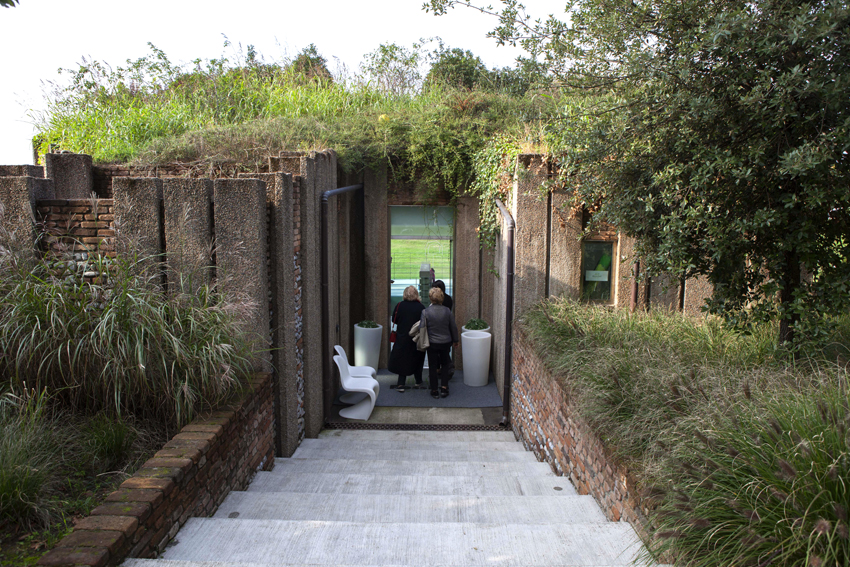


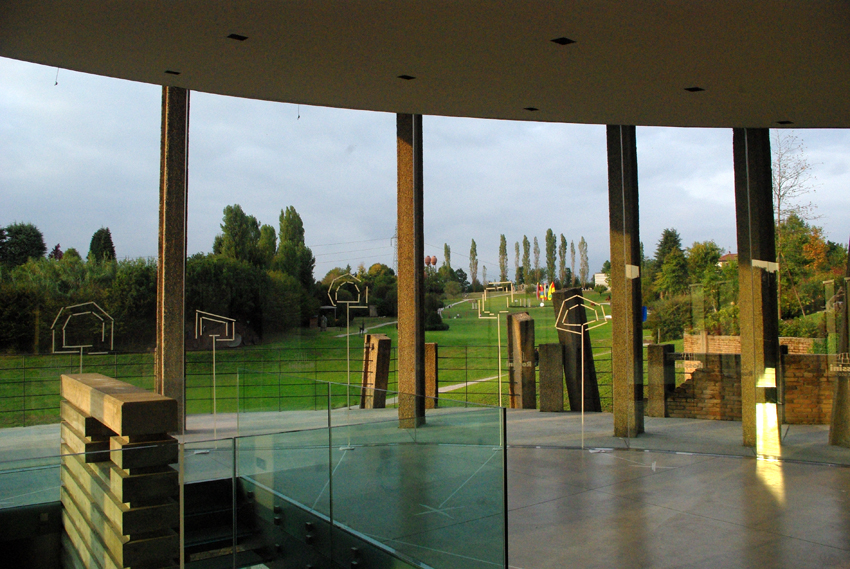


Vanishing point: the cherry tree Far left of the pavilion. In the most far end of the park lies a cherry tree; it looks like a suspended space and away from all the other directions of gaze. This part of the valley is in fact the only one not visible from the pavilion. I wanted to emphasize this dimension of abstraction and suspension by allowing visitors to experience a personal narrative time, providing them with a specific reading in the drawer that I placed in between the tree roots.
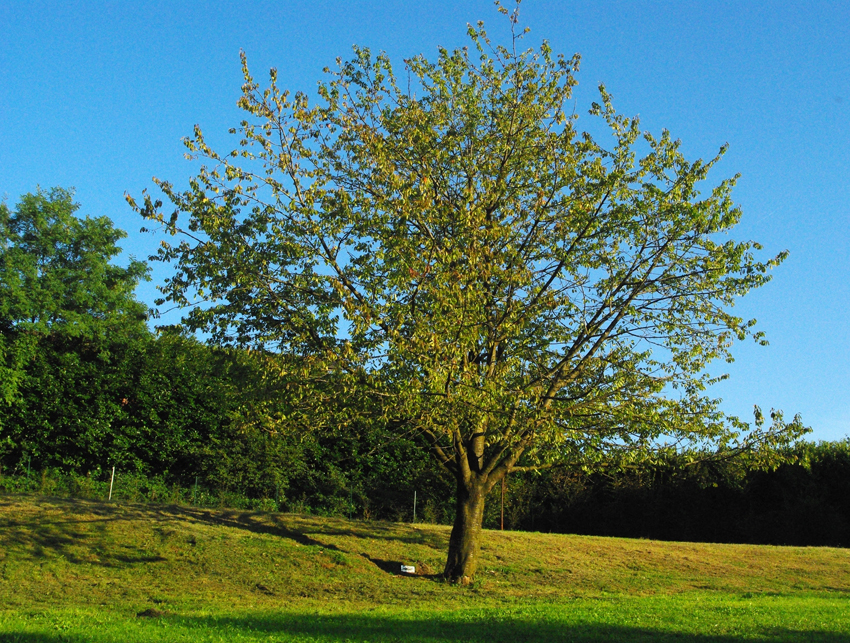
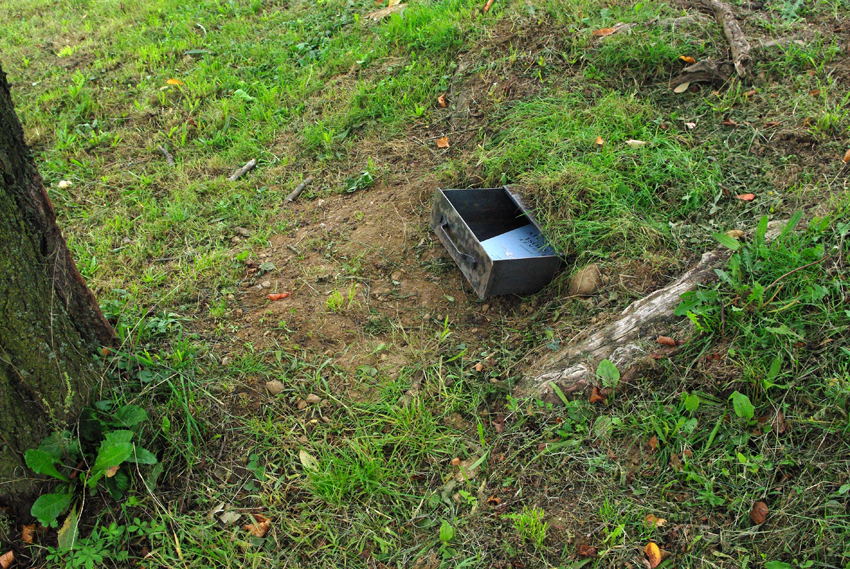

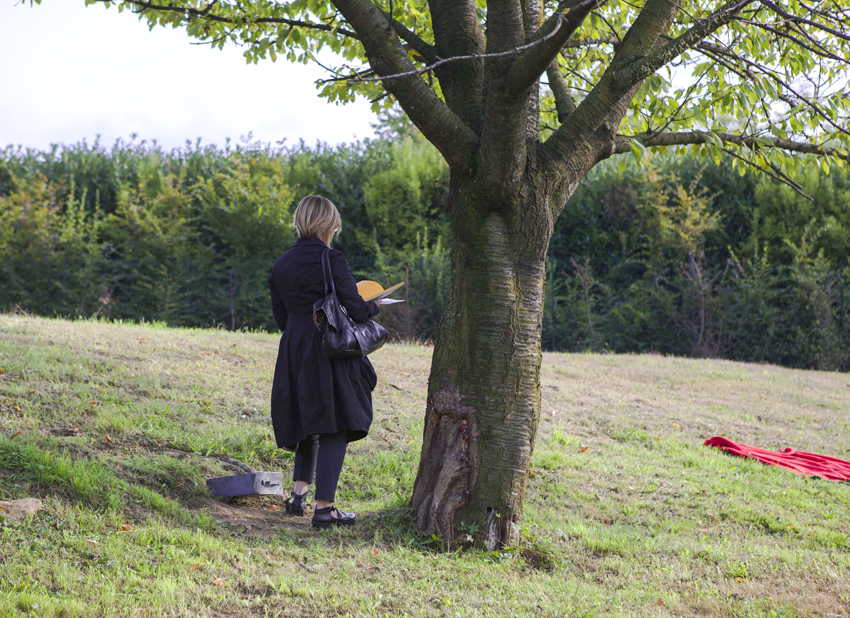


Vanishing point: the pond Intervention on the water’ surface, enhancing the concept of this small area as the natural receiver of all the descent “escaping” waters of the valley.
the waters that run away today are resting here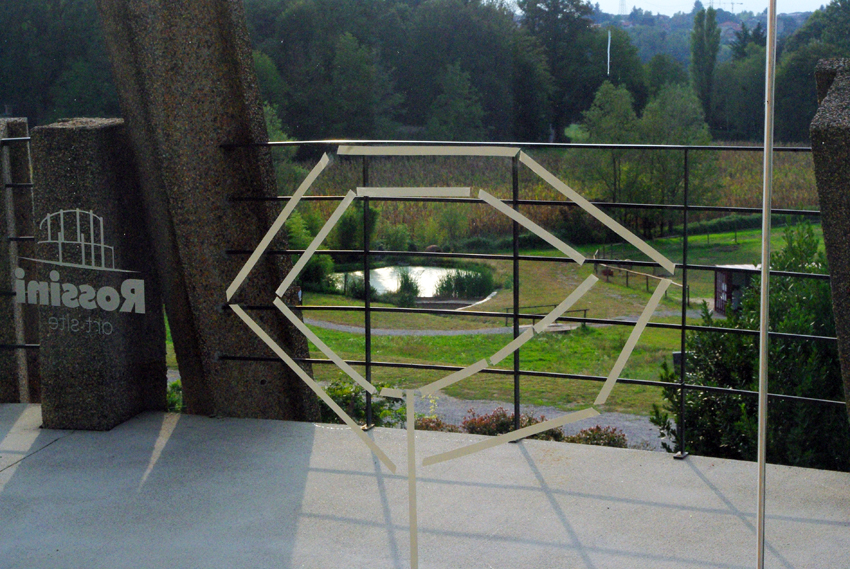
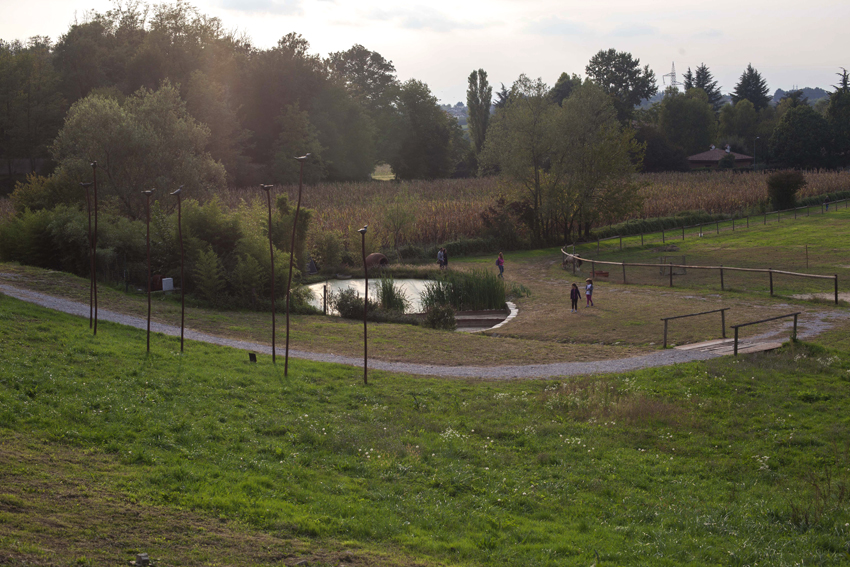
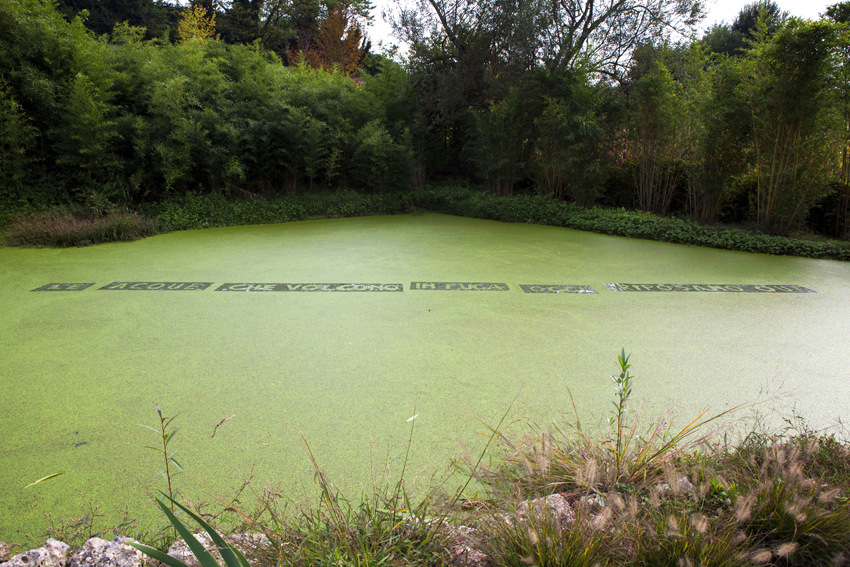



Vanishing point: the willow tree The willow tree stands at the center of a small meadow valley, in one of the least visited parts of the valley. The first time I saw it I thought to extend its branches to the ground, in order to create a green dome to hide inside, witnessing time passing and the changes of the surrounding space. I imagined ‘him’ as an intimate place of stasis. When I arrived to the park to make all the installations, one month after the residence, I verified that my vision of the willow tree was no longer ‘feasible: branches were broken , insidious wasps were stuck in large numbers on the bark, the needed materials were difficult to find the area. I began to perceive that tree like a black hole that was taking away all my enthusiasm and ideas.
I then realized that I had to overthrow my imagination; thinking about ‘him’ no longer as the black hole but as a drop that moves my imagination around him, so the soil. I imagined concentric circles departing from him breaking against sculptures and fences. I then tried to make this vision of mine real by proposing a specific intervention of excavation and shaping the ground, but I didn’t have the right climatic conditions to achieve this considerable work by the day of the show. We decided to postpone the realization of the project to the next winter, in order to inaugurate it in spring 2016.
But i still wanted to tell visitors the process of this long work on the willow tree. So I traced concentric circles using chalk dust and I asked Barbara Uccelli, fellow artist and great performer, to walk visitors between circles and to talk to them. Barbara turned my creative process into a poignant love story; only after finishing her tale, she was revealing that the ‘escaping, vanishing man’ was the tree and that the adamant, caring woman was the artist.



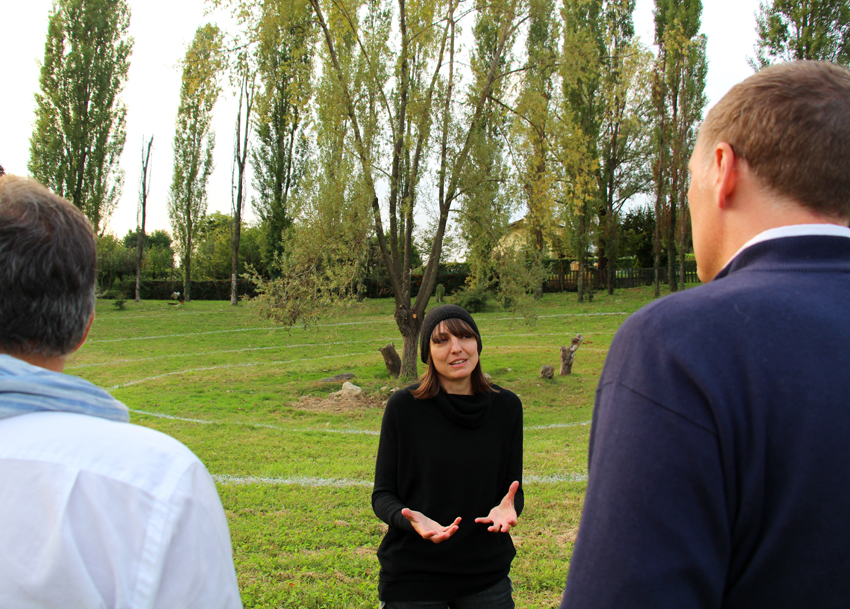
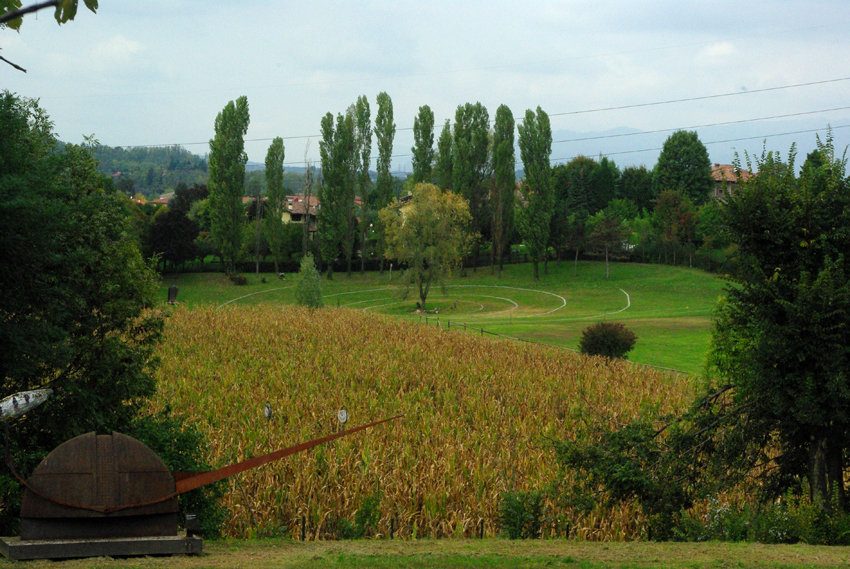
Vanishing point: Stahler, marble sculpture and wood The untitled sculpture by F. Sthaler, located in the part of the valley that arises in front of the pavilion. I considered this work the only “counter-vanishing point” possible; the only place from which I could provide the observation of the pavillion as the spacial device that guides visitors throughout the day of the show. I tied a binocular to the sculpture so that it was possible to spy on visitors and also have a read of the two F.Lloyd Wright quotes that I placed between the first and second floor of the pavilion. These selected quotes come from the book that J.Wines, the american architect who designed the pavilion in the nineties, wrote about the meaning and the practice of the organic architecture.
Modern architecture it’s simply architecture built in our time; but the organic architecture is an architecture from within that is projected outward.
Organic means intrinsic…an inherent entity ‘in which the nature of the materials, the nature of intention and the nature of execution impose themselves as needs’.
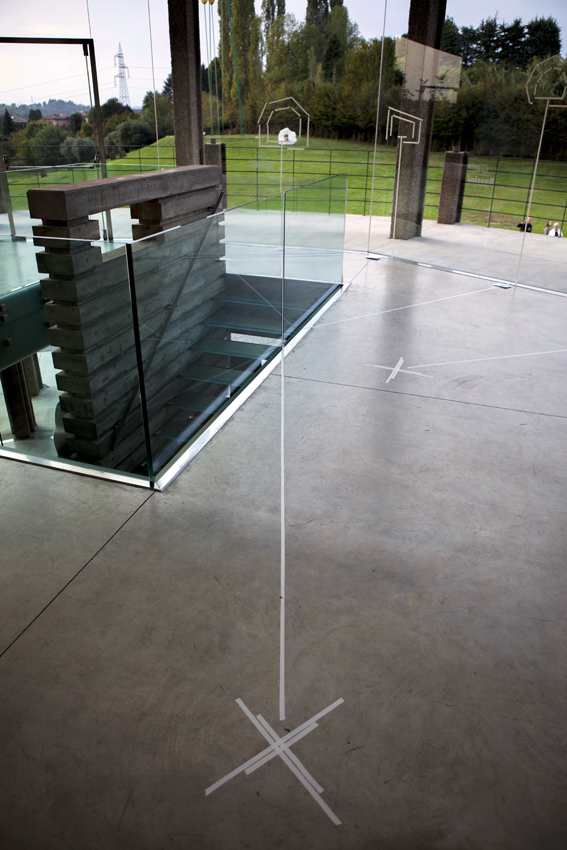
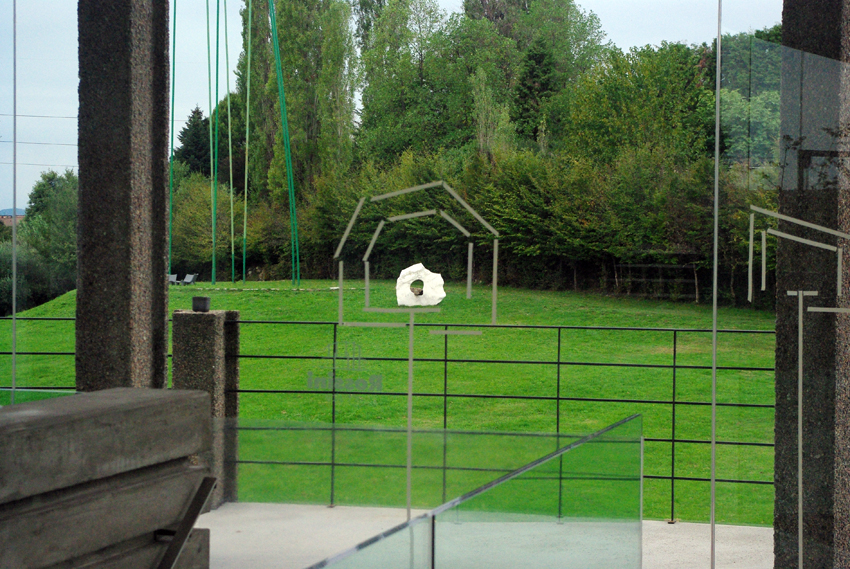

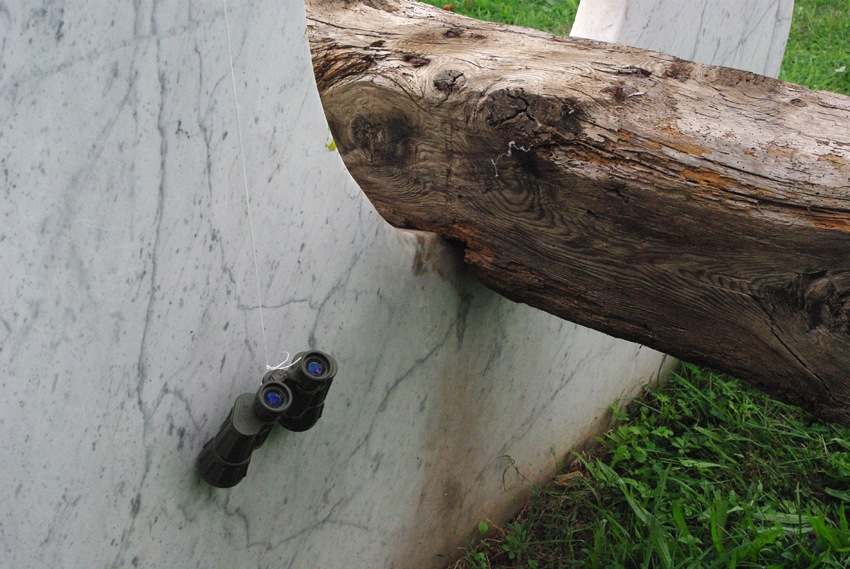
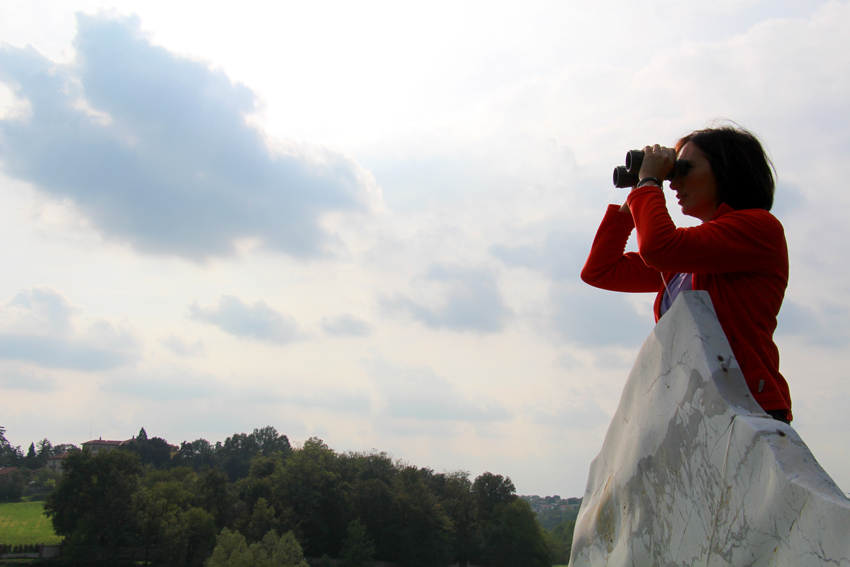
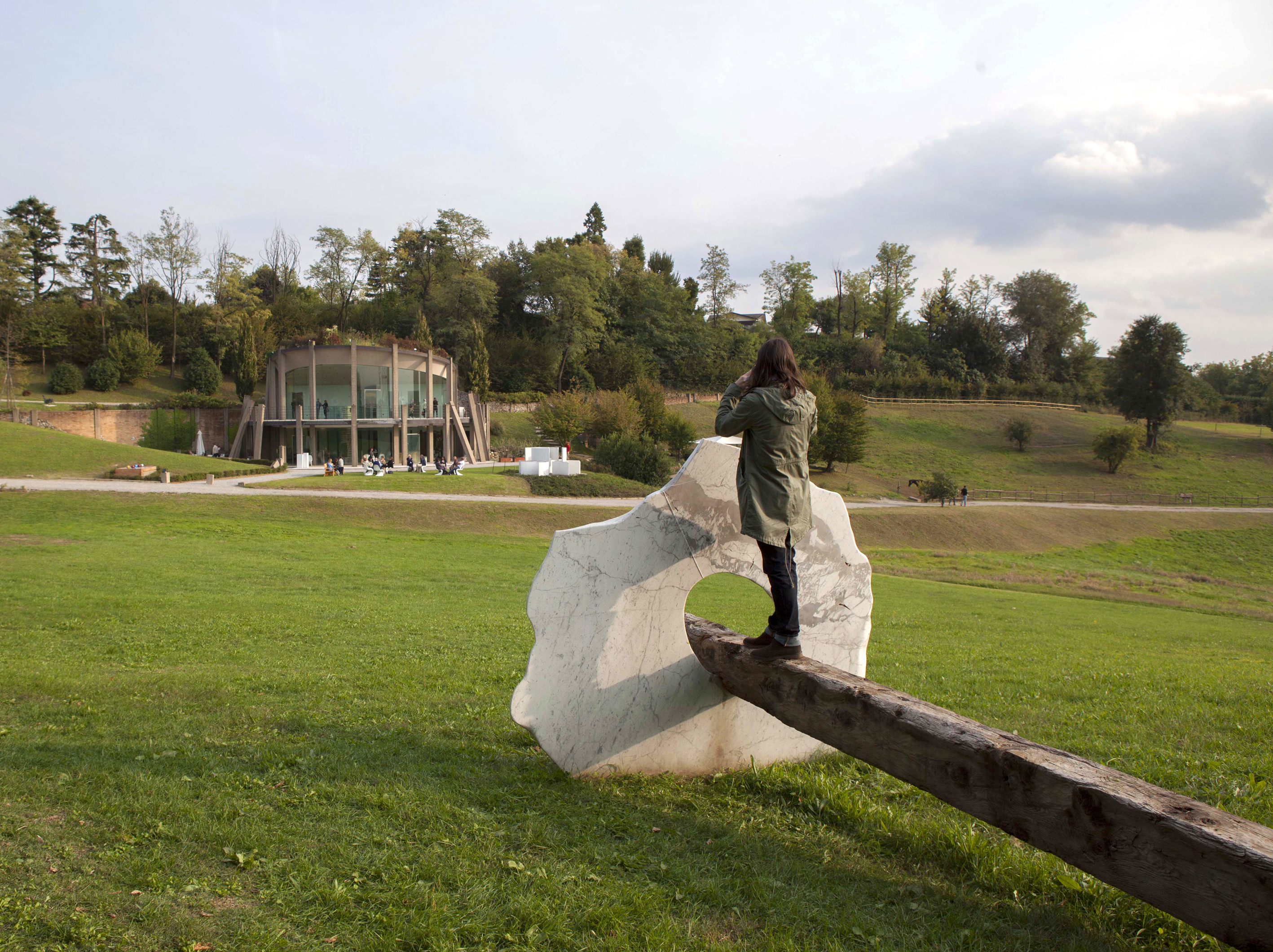

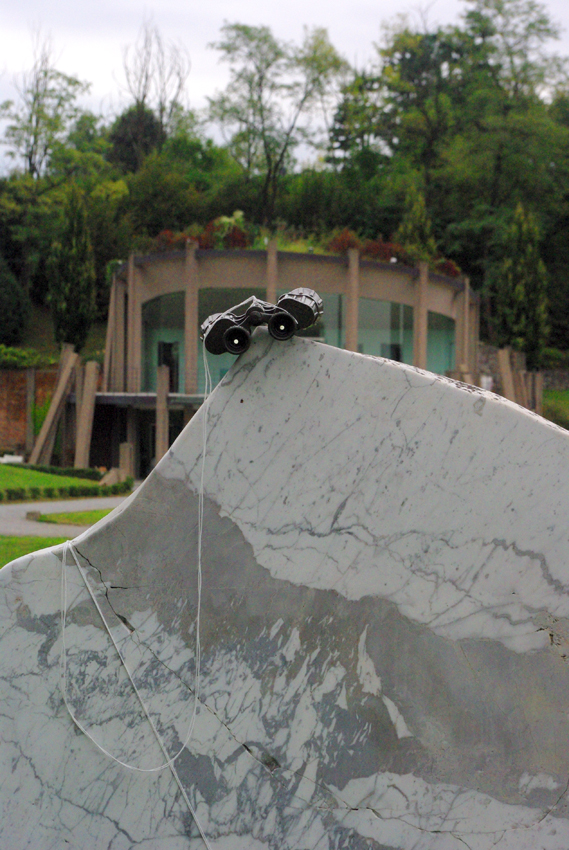

Vanishing point: the tunnel In order to bring cold air in the basement of the Pavilion, Alberto Rossini began the construction of a tunnel that was never completed. Huge concrete pipes proceed in a vacuum and shrink, without ever arriving somewhere. I painted gold each circular seam of the pipes up to 30 meters in length; I wanted to offer visitors the chance to look inside the tunnel and experience the lack of focus that occurs when trying to grasp some vision inside the emptiness. Looking into the unfinished that often grips indomitable creators…

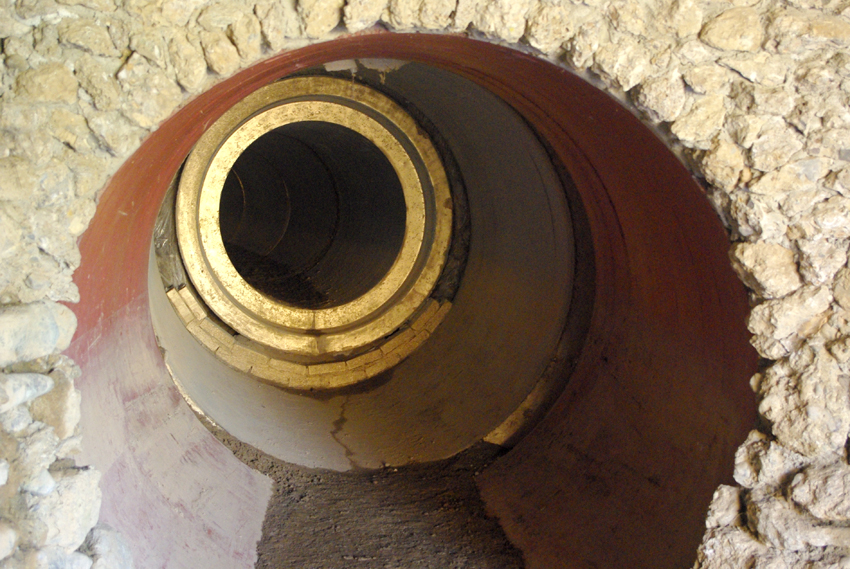
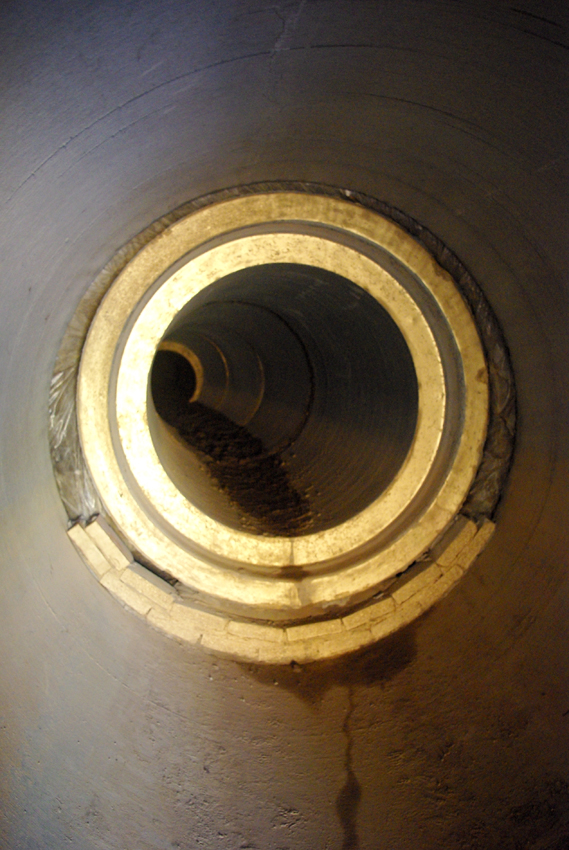
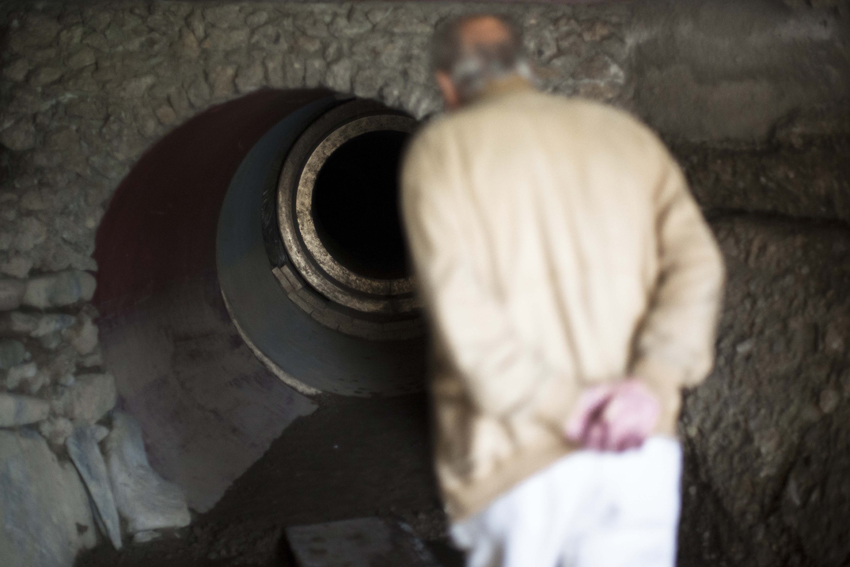
Vanishing point: Ievolella – Segreta The large V. Ievolella’s environmental sculpture called “segreta” is composed of many metal strips arranged on vertical planes; the wind vibrates them creating spontaneous musical phenomena. One night I registered myself while I was at the same time playing the sculpture and saying aloud a guided imaginary path, written by me and inspired by useful guided meditation tapes. I created a five minutes’ tape to relax and embody the park with; visitors were allowed to sit in the sculpture and, through the use of headphones, listen to my narrative and musical input.

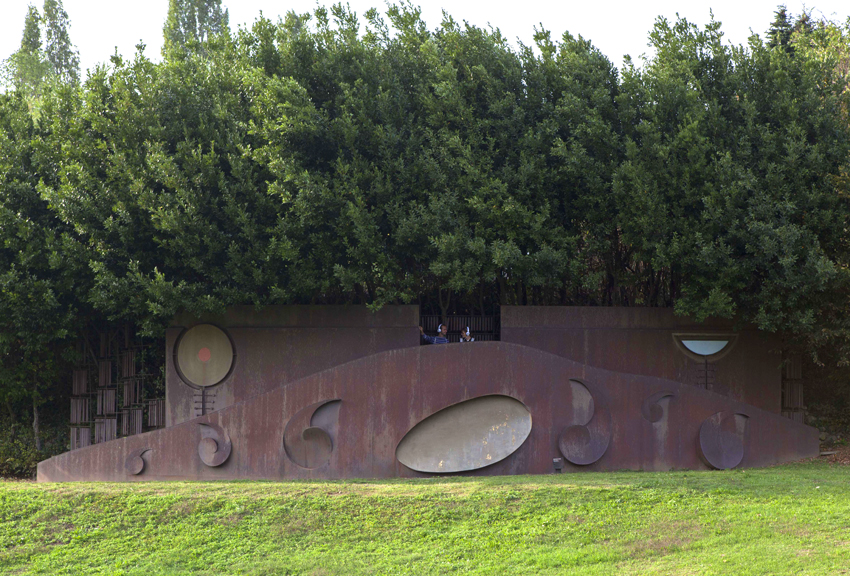
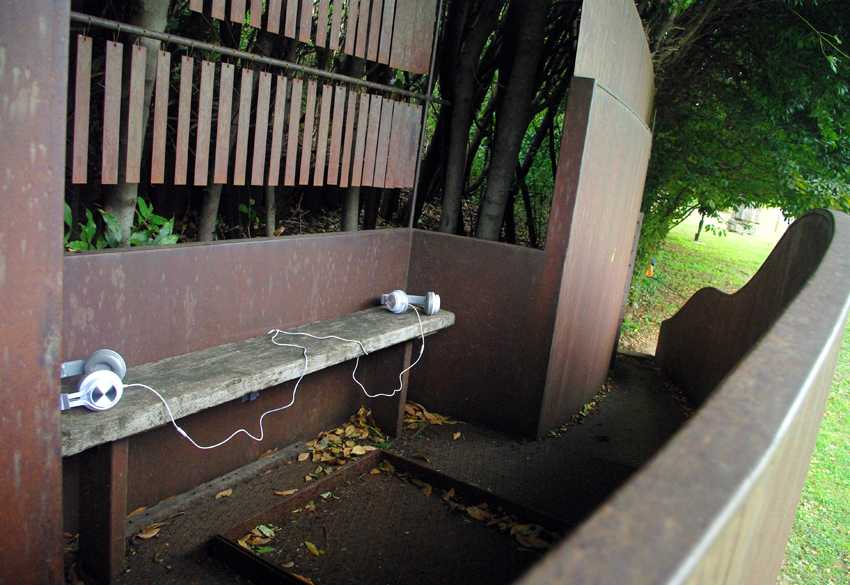
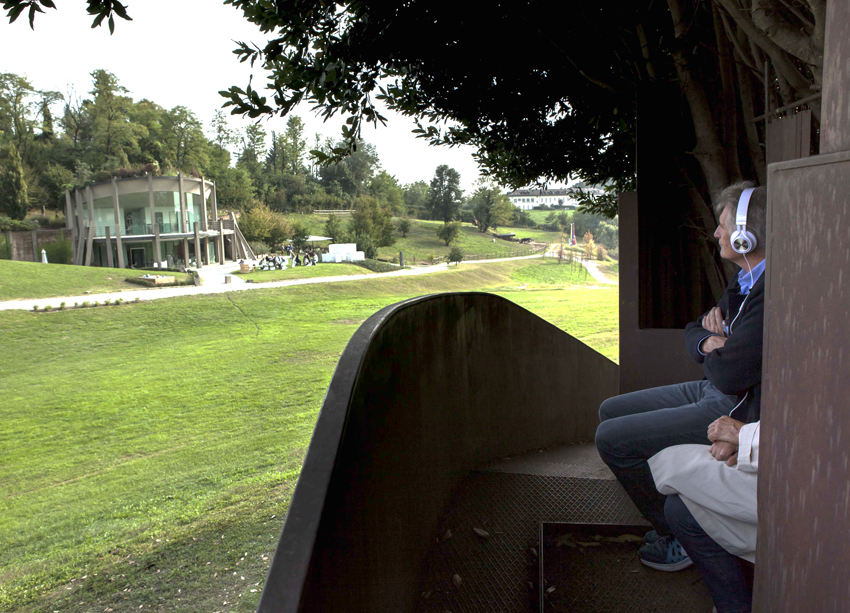
Vanishing point: Consagra – Gate of the Kremlin # 10 The “door” that separates the private part of the park from the public one is the the result of the magnification of one of the sculptures presented by Consagra in his famous exhibition that took place at the Hermitage Museum in 1991 in St. Petersburg, all financed and produced by Alberto Rossini. In order to emphasize the meaning of that passage and the strong personal ties that existed between the artist and his collector, I wanted to celebrate the memory of Alberto Rossini under that door. So I parked the Alberto Rossini’s car precisely under it and I welcomed the suggestion of the exhibition’s curator, Francesca Guerisoli, to set up in the car itself an audio installation, using 15 minutes recording of the last interview that Alberto Rossini gave us in January 2015. Mr Rossini shared with us many anecdotes about the creation of the park and about its forty years’ experience as collector.
Two visitors only could get inside the car, close the doors and experience this intimate traveling through time and space under that magnificent sculpture.
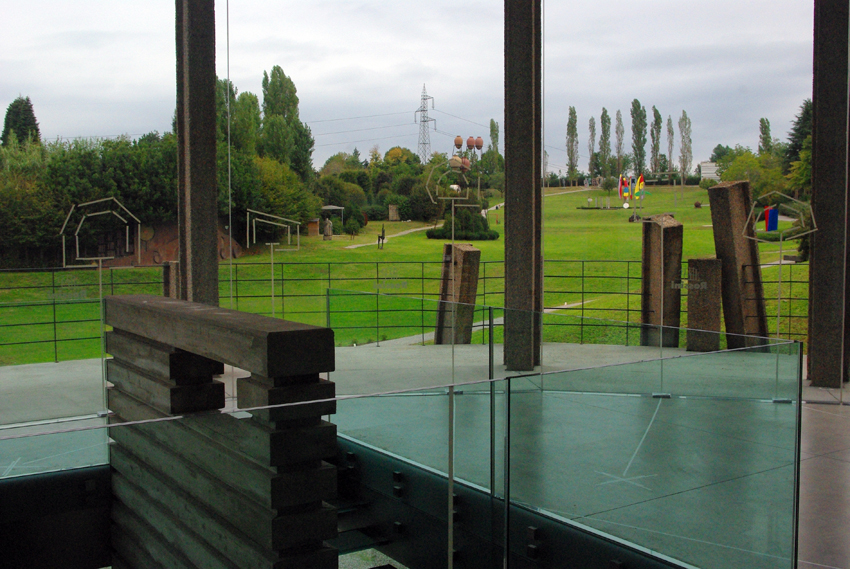
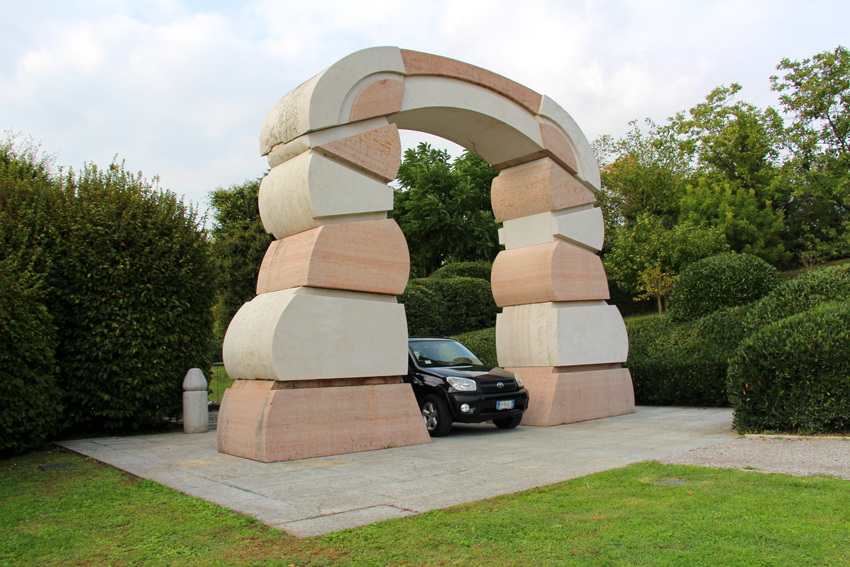
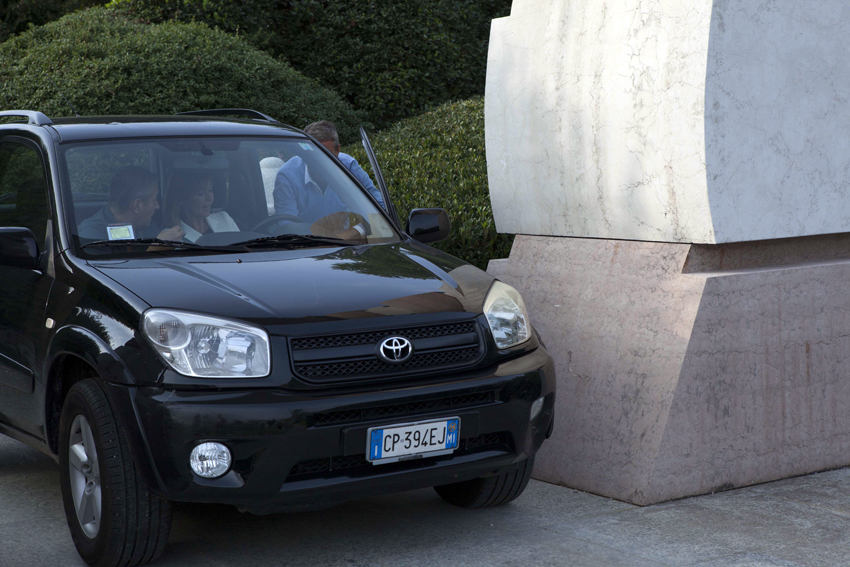

Vanishing point: Fuksas – The House of Peace It is the prototype of the public space’s project commissioned by Simon Perez to M. Fuksas at the end of the nineties. Alberto Rossini and the architect were talking about this project during their private dinner in one local tavern of Carate (Brianza). Fuksas’ wish was to develop a prototype of the building in time for the Architecture Biennale in Venice of that year (2000), which would only be inaugurated ten days later that conversation. Alberto Rossini made a bet, that he would be able to realize it, employing his whole plastic materials factory for this purpose and in fact any previous commission was suspended in order to realize this project. And the bet was won.
So I lit the space with a light bulb, I placed there that same table from the same tavern, I chose the wine, I wrote the story of the bet on the napkin and I let a visitor at a time to take a seat to the table. Each visitor was invited to spend personal time in the House of Peace, pouring wine and toasting to the successful bet without which that space would have not existed there.

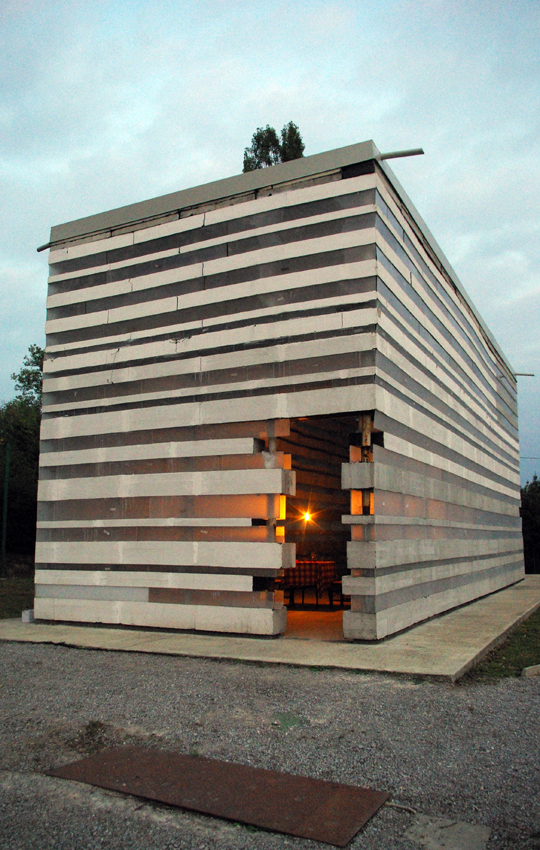
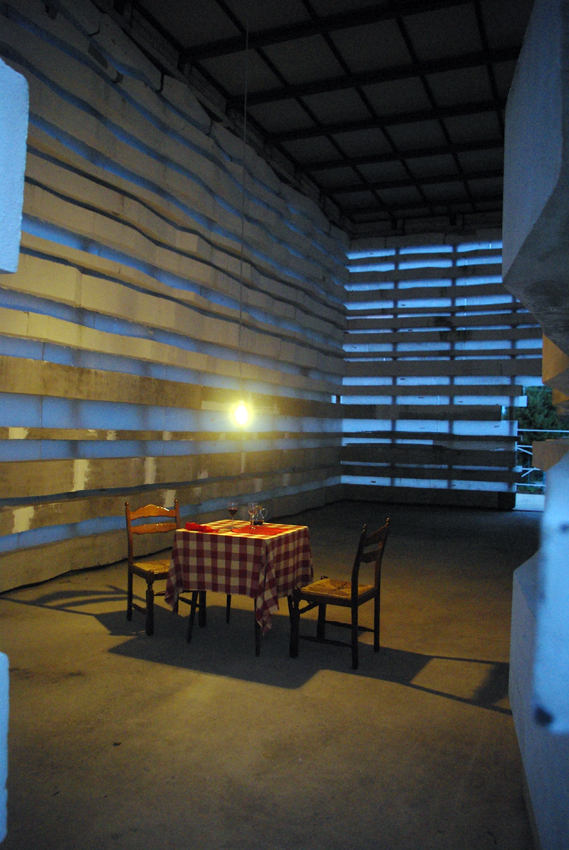


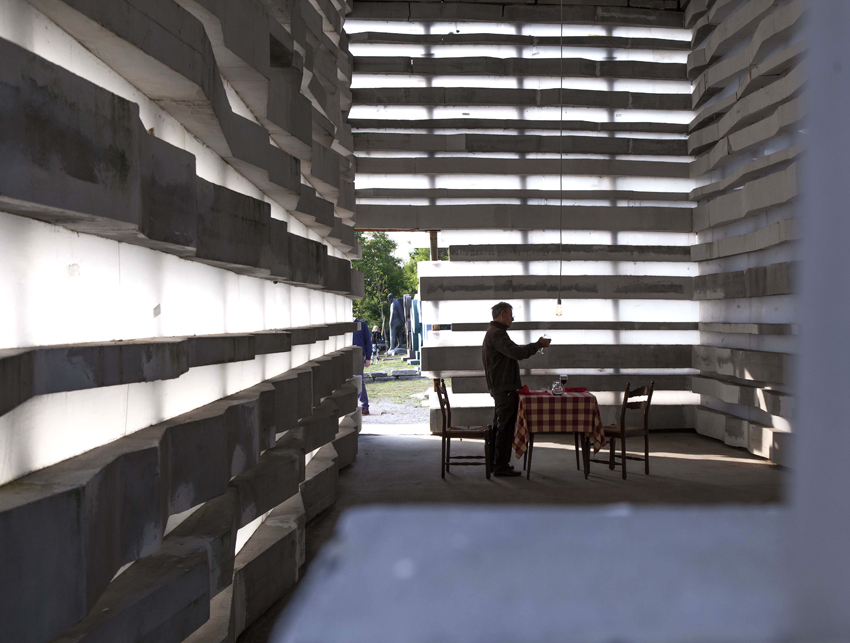
credits:
Barbara Uccelli, Luisa Rossini
photography:
Federica Cocciro, Francesca Guerisoli
